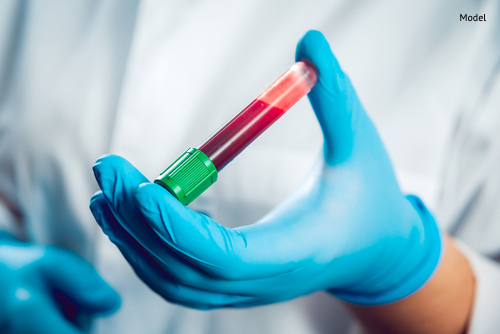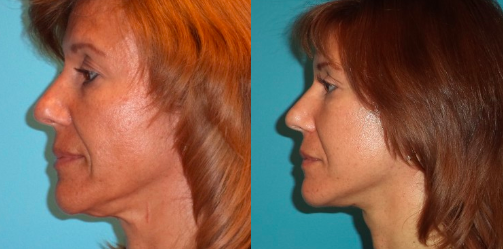The facelift is the go-to procedure for many men and women who are looking to reverse the visible signs of age. While this is a standard and safe procedure, not every patient is interested in a surgical fix. Because of this, non-invasive facelifts are in high demand. There are many non-surgical techniques available, including the PRP facial. A PRP facial uses a combination of platelet-rich plasma and dermal filler injections to restore a youthful facial appearance.

This procedure is minimally invasive, requires little to no downtime, involves no incisions, and provides a noticeable improvement. However, as with any non-surgical procedure, there is debate as to whether the results of non-surgical techniques can rival those of their surgical counterparts.
How Is a PRP Facial Performed?
A PRP facial is a multi-step procedure that improves the appearance of facial wrinkles, volume loss, and skin texture irregularities.
To begin, a series of dermal fillers, such as JUVÉDERM®, JUVÉDERM VOLUMA® XC, or Restylane®, is injected into areas where volume has been lost. These fillers are made of a synthetic version of hyaluronic acid (HA) and act in the same way as natural HA, attracting moisture to plump and fill the areas of volume loss.
Once the fillers have been injected, it is time to prepare the platelet-rich plasma. This involves taking a small amount of your blood and running it through a centrifuge to separate out the valuable plasma and platelets. These components contain large amounts of growth factors that can regenerate tissue and help to correct the visible signs of aging, leaving you with a brighter and more even complexion. The PRP is injected into various areas of the face to ensure balanced results.
What Results Can a PRP Facial Provide?
Following a PRP facial, patients can expect a brighter, smoother, and tighter complexion with more defined facial features. This procedure relies heavily on the use of dermal fillers, and your results will be temporary—fillers traditionally last between nine months and one year. However, the platelet-rich plasma used in a PRP facial rejuvenates the deeper levels of the skin and tissues, leaving you with an inner glow that will last beyond the lifetime of the fillers.
When Might a PRP Facial Be Appropriate?
A PRP facial is ideal for patients who are not emotionally prepared for or are not candidates for a surgical facelift. Those with heart problems, high blood pressure, diabetes, or bleeding disorders are not candidates for cosmetic surgery because the risk is too high. That said, they may still be candidates for a PRP facial.
Patients with mild to moderate skin aging, or those who are looking to enhance the health and brightness of their complexion may be ideal candidates for a PRP facial.
When Is a PRP Facial Not Appropriate?
Due to the minimally invasive techniques applied during a PRP facial, the procedure cannot be a straightforward rival of a surgical facelift. A traditional facelift improves the appearance of significant sagging of the tissues, deeper creases, jowls, displaced fat, and substantial aging of the neck. This procedure uses incisions made in the hairline to remove excess skin, tighten muscles, and re-drape the skin to address moderate to severe signs of aging. A PRP facial can correct mild lines, wrinkles, and facial sagging. It may not be ideal for older patients or patients who exhibit a higher degree of skin laxity.
What Can a PRP Facial Accomplish That a Traditional Facelift Cannot?
While a PRP facial cannot achieve the same level of results as a facelift, it does offer many benefits that traditional facelift surgery cannot. Platelet-rich plasma contains a high concentration of growth factors that help the tissues heal and stimulate collagen production and cell renewal. This allows for tissue renewal from the inside. In addition to improving the appearance of fine lines, wrinkles, and minor to moderate sagging, a PRP facial addresses rough skin textures, thinning skin, acne scars, and dull complexions. Facelift surgery is at the top of many patients’ wishlist when it comes to restoring youthful facial contours; however, even surgery cannot improve skin quality the way that a PRP facial can.
For more information about a PRP or a surgical facelift, contact PREMIERE Center for Cosmetic Surgery by calling (813) 400-1465 or by filling out our online contact form.


